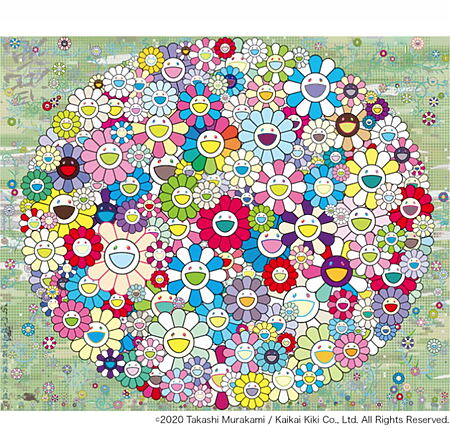The advanced course "Cinematic and Videogame Architecture March" is the first of its kind in Europe and gives students the use of revolutionary architectural design methods based on film, animation and game technology. The students will critically assess their work with regard to new progress in time -based digital media and their effects on our culture, identity and politics.
The Bartlett School of Architecture, which is located on the brand new UCL East Campus of the UCL, is now accepting applications for the start of the course in 2025. Starting starts in September.
About the fusion of architecture, film production and gaming
Rapid progress in digital technology has brought the different areas of architecture, film and video games closer together than ever before.
Architecture has long served as a basic structural component in both films and video games. From the construction of film sets to progress in film composition technology and improvements in computer graphics, the presentation of the room was a major problem. This was particularly true for the realization of our current media landscape of films and video games. The narrative potential of time -based and interactive media, in turn, not only changes the construction and representation of architecture, but also its conception and experience.
As early as June 2024, WorldBuilding: Gaming and Art in the Digital Age the interaction of gaming and time -based media art. It was the first cross -generational exhibition of this kind that analyzed how contemporary artists around the world use the aesthetics and technology of video games as an expression. *
The commissioned Julia Stoschek Foundation Hans Ulrich Obrist will travel to various institutions around the world in the next few years * . The exhibition shows works by more than 50 artists, including Rebecca Allen, Cory Arcangel, Laturbo Avedon, Meriem Bennani, Ian Cheng, Cao Fei, Harun Farocki , Porpentine Charity Heartscape, Pierre Huyghe, Rindon Johnson, Kaws, Sondra Perry, Jacolby Satterwhite, Sturtevant and Suzanne Treister, in the Julia Stoschek Foundation in Düsseldorf and the Center Pompidou Metz.
The sheer size of the gaming industry was the subject of the Forbes article The Gaming Industry: A Behemoth with unprecedented global Reach * and can also be recognized by rapidly growing online communities such as Egamersworld .

image sources: FreePik (AI generated)
Students of the first curriculum of this kind in the United Kingdom will critically set their work in connection with new progress in time -based digital technologies and their effects on our culture, identity and politics. You will innovative methods of architecture design .
What are the focus of the study program?
The curriculum prepares the students for the future of architecture design by developing skills that can also be used in the film and game industry as well as in VR/AR environments. The students dominate new design techniques that combine film, animation and game engine software.
They are supported by a first -class team of lecturers and guest professionals from industry to become architectural storytellers and world builders who deal with the most urgent problems in the world. The students develop their own creative practice through design projects and theoretical writing. This culminates in the creation of a final project that presents your own research methods through a film, a game or an interactive environment.
The program eliminates architectural design fundamentally through an immersive, time -based and interactive lens. Through the combination of architecture with cinema and video games, students acquire skills that can be used in the architectural profession, in the film industry, the video game industry and in other development areas such as immersive environmental design.
Graduates have the skills and critical thinking to exercise professions in a wide range of industries, including entertainment and built environment. You can also create new hybrid practices at the interface of architecture and game design, filmmaking and theory.
How is the program provided?
The program, which is taught by internationally renowned experts for the latest digital technologies, is housed on the new UCL East campus. It includes new state-of-the-art design studios and computer facilities as well as common specialist media and workshop rooms. The program is based on a strong and experimental, practice -oriented studio component, with practical learning being complemented by solid theoretical research. The students get to know theoretical topics through lectures and introductory design projects that are supplemented by modules to digital skills.
This interdisciplinary approach enables students to test ideas and establish new research methods, which leads to architectural design projects, which are designed and implemented by films, video games and hybrid digital-physical environments.
Prof. Penelope Haralambidou and Dr. Luke Caspar Pearson look after the program. Penelopes teaching and research use a unique practical technology that examines spatial culture using drawing, modeling, digital video and immersive settings. Luke is a co-founder of You+Pea, a design research studio that combines architecture with video games and works with cultural and educational institutions as well as industrial customers. He is also a co-author of Videogame Atlas (Thames & Hudson, 2022).
Who is this course suitable for?
The UCL is looking for applications from architectural graduates and experts as well as those from other areas such as design, filmmaking, film science, anthropology, geography, visual art, video game design, graphic design, animation and computer -generated image design. These should be interested in examining the relationship between architecture, cinema and video games more intensively. You should also have a strong academic and/or practical track record.
Admission conditions:
As a rule, an academic conclusion in a relevant field as well as an equivalent international qualification or extensive relevant industry experience (7+ professional years) are required. As soon as a complete application has been received, applicants are asked to provide a link to a portfolio of their design work.
Work should only be sent or uploaded if they are requested. Offers are tied to an interview.
Take a look at the recording of the virtual open event for the Cinematic and Videogame Architecture March at the Bartlett School of Architecture. This will help you get a deeper understanding of what this course is about.
Application deadlines
The application period ends on April 4, 2025 for candidates who apply for a visa for the United Kingdom, and on August 29, 2025 for those who do not need a visa for the United Kingdom. You can find detailed information on the program page "Cinematic and Videogame Architecture" or in the UCL brochure.
Sources, technical support and further information:
- E-Flux : Cinematic and Videogame Architecture March , https://www.e-flux.com/announcements/636192/cinematic-and-videogame-architecture-MARCH/
- UCL: Cinematic and Videogame Architecture March , https://www.ucl.ac.uk/prospective-studets/graduate/tight-degrees/cinematic-and-videogame-architecture
- E-flux : WorldBuilding: Gaming and Art in the Digital Age , https://www.e-flux.com/announcements/610907/worldbuilding-gaming-and-art-in-the-digital-age/
- Julia Stoschek Foundation: Exhibitions - WorldBuilding, https://jsfoundation.art/exHibitions/worldbuilding
- Forbes : The Gaming Industry: A Behemoth With Unpecedented Global Reach , https://www.forbes.com/councils/forbesagecycouncil/2023/17/the-gaming- indo

Owner and Managing Director of Kunstplaza. Publicist, editor, and passionate blogger in the field of art, design, and creativity since 2011. Successful completion of a degree in web design as part of a university program (2008). Further development of creativity techniques through courses in free drawing, expressive painting, and theater/acting. Profound knowledge of the art market through many years of journalistic research and numerous collaborations with actors/institutions from art and culture.

















